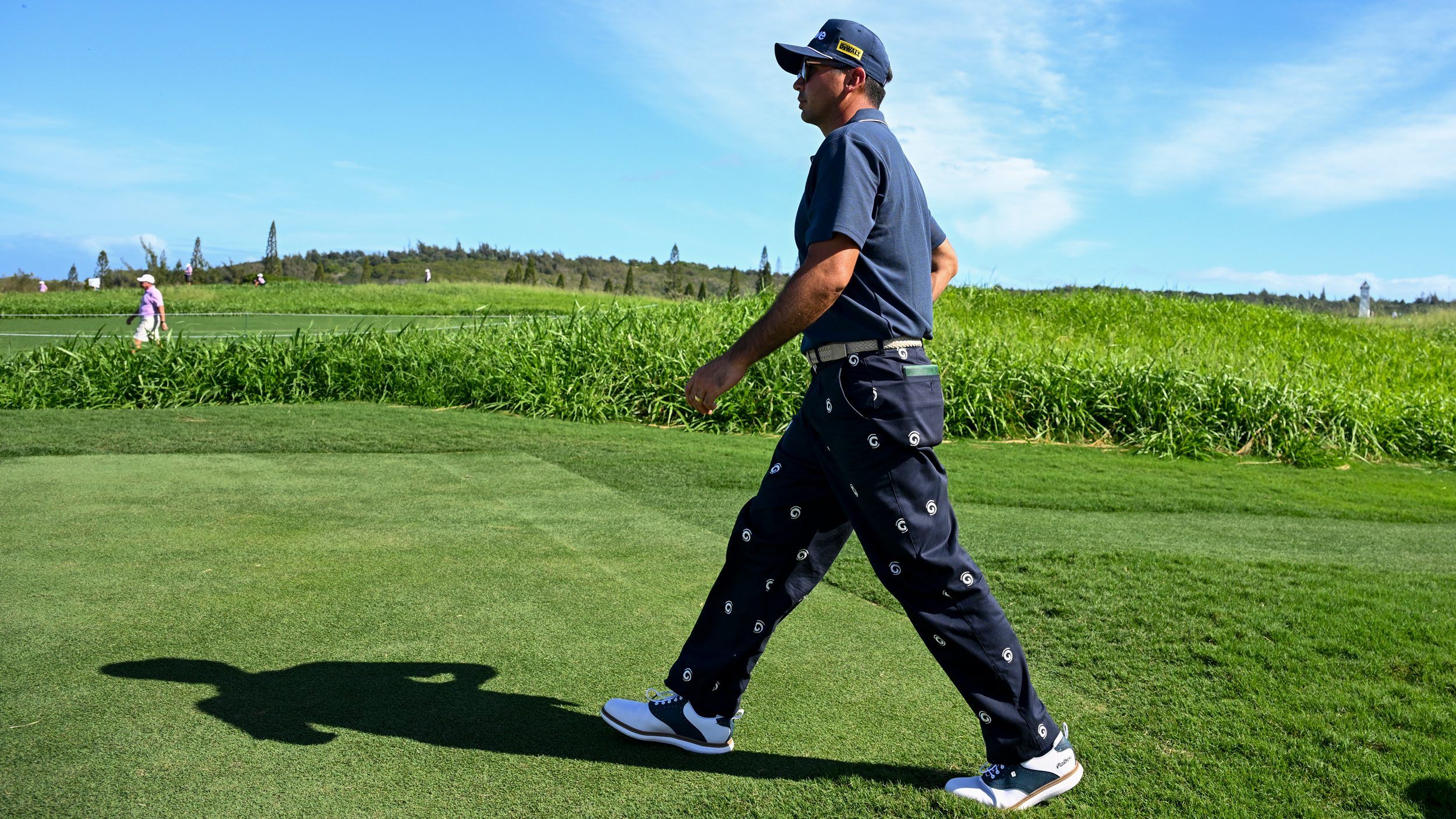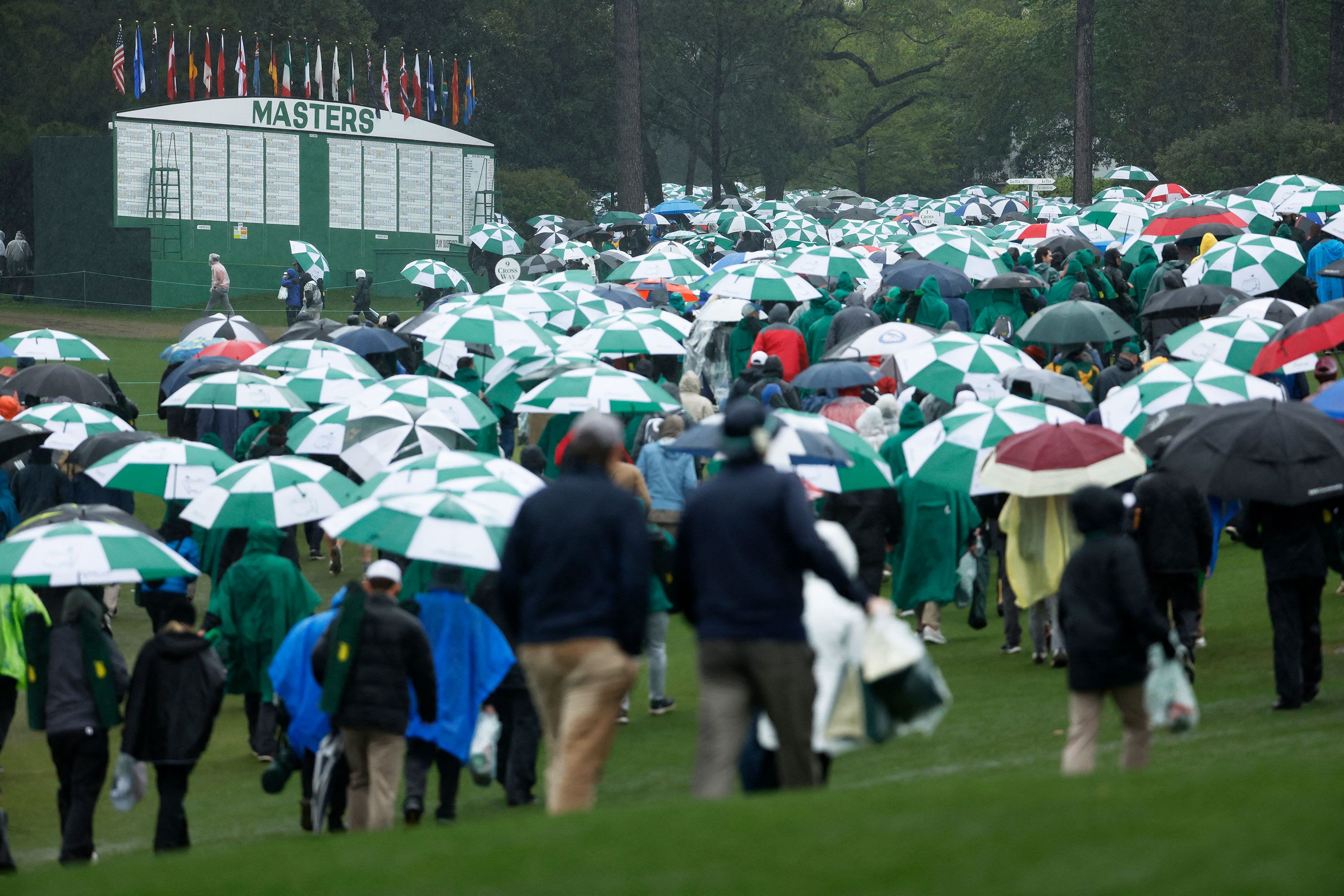Golf Instruction
The Dog Days of Summer Golf
There’s a bit of irony being a dedicated golfer who lives in the Northeast. Allow me to illustrate.
Somewhere around October/November, fall settles in. It gets comfortably cool outside, the trees change colors, and it looks really pretty until the fairways are covered with leaves and you’re constantly losing your ball. But you really don’t care because the golf courses (finally) aren’t crowded.
And then about 2 weeks later, it’s winter.
So you go to the gym and try to get in better shape than last season, but you know the truth is that you’re willing to do anything to help pass the time until The Masters. And just in time to stop you from packing up all your golf gear, abandoning your family, and moving to Florida to spend the rest of your life working on a golf course, you hear Jim Nantz’s voice on the TV and everything is okay because you know that spring is almost here and that it’s time to dust off your clubs and, once it goes above 36°, hit the range.
So now that it’s finally warm enough to spend more than hour outside without wearing a ski jacket and gloves, you sneak in a few rounds of early spring golf, but you’re not even enjoying it because hitting everything fat and disappointed that you still haven’t figured out how to straighten out that slice.
So after a couple of rounds, it’s finally summer. And while you’ve been waiting for this weather for the past ~7 months, you actually kinda disappointed with “beach season” because it’s always humid out, after 3 holes it looks like you’ve been running on a treadmill instead of enjoying a relaxing round of golf, the golf courses are charging outrageous “peak season” rates, and every course is so overbooked that when you pull into the parking lot, you’re convinced you made a wrong turn and ended up at a Guns N’ Roses concert being held at MetLife stadium.
So how do you survive the dog days of summer golf to make sure you get to enjoy and play your best during, in my opinion, the best part of golf season in the Northeast: the fall.
1. Play
This one is probably obvious, but play golf. Unless you’re working on something specific, there’s a very good chance you’ll “learn” more while playing 18 or even 9 holes than hitting balls on the range. I mean, hitting off a flat mat isn’t going to help you be prepared for uneven lies on approach shots and narrow fairways off the tee. Just try to play as much golf as you can.
And during the week, when you can’t play, try to squeeze in ~30 minutes a couple nights a week. For example, work on your putting and dialing in your speed control, hit some foam balls with a wedge at that picture of your in-laws you can’t stand (try using different trajectories for extra laughs), and try to some full-swing position work to stay fresh and fix obvious mistakes like an open club face (take a one-minute long swing, ideally with a mirror, and try to build awareness of your swing and make sure you’re in the right positions at the right time).
2. Identify Your Weaknesses
Now with the little bit of free time you do have, I would suggest doing two things. First, digest that most recent round of golf.
Besides being upset that the snack cart ran out of your favorite beer, there’s a good chance you can remember all the bad shots from your most recent round (and for those of prefer to take a more data-centric approach, consider picking up a Shot Scope v2). Maybe it was leaving an easy approach shot from ~120 yards out short, which forced you to surrender that birdie opportunity. Or maybe it was that 3 wood off the deck you topped on that Par 5 that forced you to scramble for a bogey. Regardless, identify what you’re struggling with.
Second, try to force yourself to work on those shots on the course.
Like I said earlier, time spent playing is going to be significantly more valuable than “practicing” the same shot on the range. If you’re struggling with the 3 wood, force yourself to use it every chance you get. Each of the 14 clubs in your bag have a purpose, you should try to be proficient with each one. You’ll never know when you need a low, but very accurate, 130 yard stinger to get out from the trees, while avoiding the water hazards, and within chipping distance of the pin.
Don’t get me wrong, if you have the time and energy to put in some extra work, sure, hit the range. But the most valuable part here is identifying the low-hanging fruit that you can, hopefully, improve and get comfortable with before fall golf arrives.
3. Hone Your Mental Game
Like I alluded to earlier, summer golf brings out everybody who owns golf clubs. This can sometimes mean that the group of guys who booked the 8:45 a.m. tee time and decided to have a beer round have probably turned your relaxing round of golf into a 5 ½ hour marathon/torture session. Don’t let it get to you.
Take the time to appreciate being outside. Try to take the time to make every shot count. Do NOT start trying to incorporate new swing thoughts or drown on a poor shot. You’re playing golf, life is good. If you’re lucky, your playing partners won’t care if you throw an extra ball down here or there since you can’t really go anywhere fast anyhow.
4. Put the Clubs Down
Now this may seem counter-intuitive (and in direct contradiction with #1), but the worst thing you can do is burn yourself out. Everyone has a different threshold, but at a certain point you might become so frustrated with your game that it actually sours your perspective of golf or, even worse, you start to doubt your ability.
The latter happened to me; every time I got to this one hole on a course I frequently play at, I would shank a routine ~80 yard approach shot. While it might have initially been a lack of focus or exhaustion at fault, it eventually got to the point that I started to accept the fact that I’d still have a wedge in my hand for that third shot.
Short Version: Do NOT get to this point. Know when enough is enough and step away before you develop a subconscious distaste for the game or, worse, the yips. A week (or two) away from the game will help you return for that next round recharged, refreshed, and excited to play. And that’s the best feeling you can have before stepping onto that first tee.

In sum, I’m a firm believer that fall golf is the best time of the year for the dedicated golfer, particularly here in the Northeast. Accordingly, you want to make sure your game is in top shape to make sure you can play some of your best golf, maybe achieve a few more of your goals, and, ideally, close out the season with a downward trending handicap.
But that means making the most out of this next month. So whether it’s developing that “must-have” shot or getting your mind in the right place, do whatever’s necessary to make sure you’re prepared for that year-end scramble so you can put a hurting on your playing partners.
-
Equipment6 days ago
Bryson DeChambeau is Using Custom 3D Printed Irons at The Masters
-

 News1 week ago
News1 week agoMalbon Has Jason Day Looking DAPPER for The Masters
-

 Fantasy Golf Predictions3 days ago
Fantasy Golf Predictions3 days agoFantasy Golf Picks, Odds, and Predictions – 2024 RBC Heritage
-
News7 days ago
U.S. Open Champ Takes a Dig at DeChambeau, but Is It Warranted?
-

 News1 week ago
News1 week agoDark Skies Ahead: Masters Forecast to Favor Bad Weather Golfers
-

 News1 week ago
News1 week agoLANDSLIDE: Brandel Chamblee Predicts a Runaway Victory for Past Masters Champ
-
News6 days ago
WATCH: Frustrated Ryder Cup Caption has Choice Words for Masters Patrons
-

 Apparel1 week ago
Apparel1 week agoViktor Hovland Joins Team Puma














